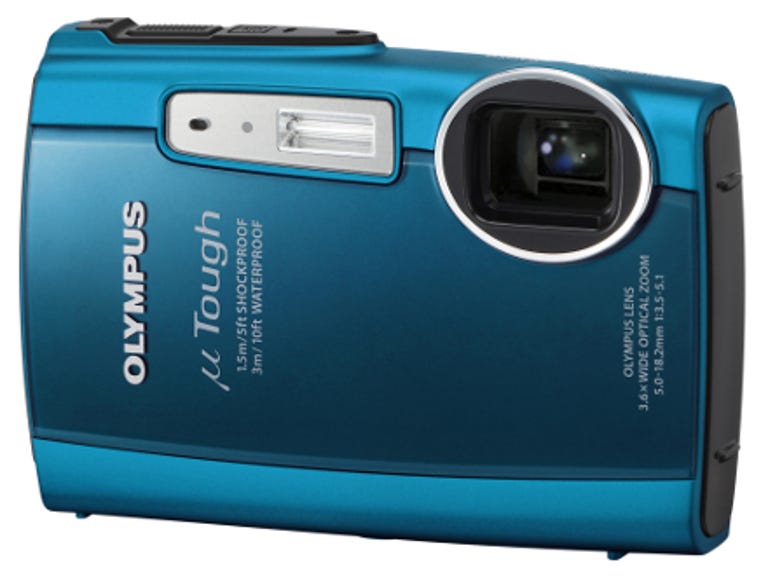 Why You Can Trust CNET
Why You Can Trust CNET Olympus mju Tough-3000 review: Olympus mju Tough-3000
The 12-megapixel mju Tough-3000 compact camera offers a good combination of features, durability, convenience and affordability. As with most rugged cameras, you won't get exhibition-quality prints from the 3000, but adrenaline junkies should give it a perusal
Olympus' mju Tough-3000 can dive to 3m, survive a drop of 1.5m and still works when it's frozen at -10°C. You also get a 12-megapixel sensor, 3.6x wide-angle zoom, in-camera panoramas, 720p movies and 1GB of internal storage. All that makes the £165 asking price look rather appealing.
The Good
The Bad
The Bottom Line
Skinny nutter
To make a waterproof camera, Olympus has used a non-extending, 'folded' lens, so the 3000 is very nearly a super-slim camera. The chunky shockproofing beefs it up somewhat, but it's still small enough to slip into a trouser pocket.
In fact, you've got to ask yourself: why get an ordinary super-slim camera when you can get a ruggedised camera like this? It's not much bigger and doesn't really cost any more. The 3000 is chunky and funky rather than elegant, but it's highly practical. When you're not under 3m of water or waving it around on the piste, it'd be perfect as a general-purpose family camera.

There's not much to see on the front. On the back, all the controls are clustered on the right-hand side, under a matte black, waterproof panel. The controls are easy to figure out because all the main shooting functions are displayed as icons running vertically down the right-hand side of the screen. You use the up and down navigation buttons to select a setting and the left and right buttons to change it.
The battery, memory-card slot and connectors (including HDMI for the HD movie mode) lie under a hinged door on the right-hand side of the body. It clips in place securely with a catch. The catch can also be pushed sideways so that it locks in position and doesn't open accidentally while you're underwater.
Speaking of memory cards, Olympus has quietly ditched the xD-Picture Card format. The 3000 uses a perfectly standard SD or SDHC memory card. It doesn't even have the dual-format slot, accommodating both xD and microSD cards, used in some mju models during the changeover.
Foe of fat fingers
It's hard not to like the 3000 for its simplicity and practicality, but it does have a couple of significant flaws. The first is that the controls seem unnecessarily small given the conditions this camera's designed for. Stick a pair of gloves on and those titchy navigational buttons could drive you round the bend. You'd be well advised to plan ahead and set the camera up before you start climbing Everest.
And why are the buttons so sluggish? It's hard to tell whether it's the waterproof panel that's the problem or the responsiveness of the menus. It doesn't help that, every time you scroll past the EV-compensation icon, the 3000 insists on momentarily popping up a set of thumbnails showing you what your picture will look like if it's slightly darker or lighter.
The second issue is the 3000's picture quality. Yes, it's got a 12-megapixel sensor, but the lens on this camera isn't really sharp enough to approach its limits. Fine detail has a hazy look and darker, shadowy regions are smoothed into a kind of polychromatic mush even at the camera's minimum ISO, so there's something rather iffy about the 3000's image-processing ability too.
Conclusion
The Olympus mju Tough-3000 can go places other cameras can't, yet it doesn't cost a great deal more than an ordinary digital snapper with similar specs. It's smart, practical and tough, but its drawbacks are its slightly clumsy controls and below-par image quality.
Edited by Charles Kloet
